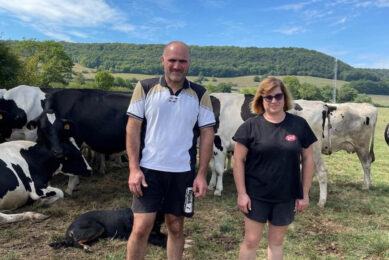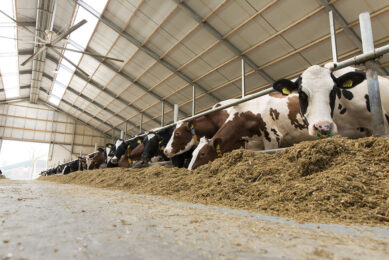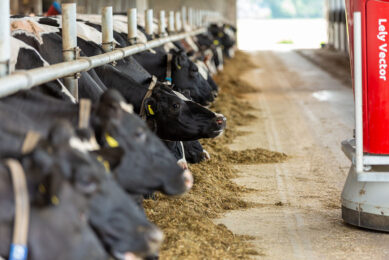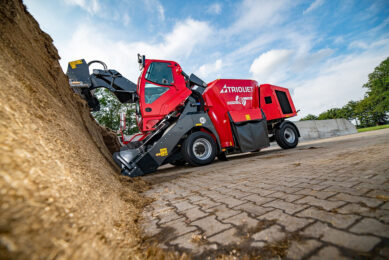Robotic feeding: Save time, reduce labour, achieve higher sustainability
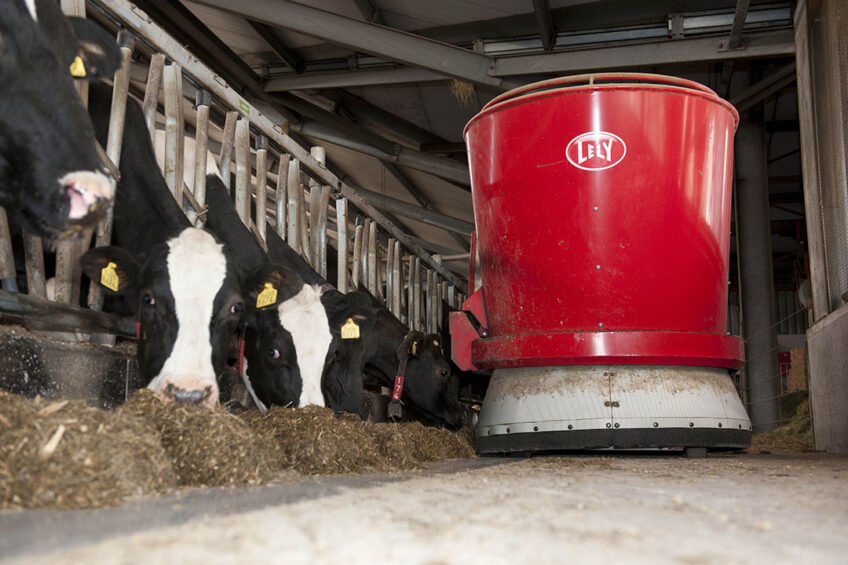
Feeding is one of the biggest costs on a dairy farm and the most labour-intensive activity after milking. Therefore, to meet the growing demand for milk and meat products, farmers need to apply advanced technologies in dairy feeding systems while considering farming productivity and sustainability and ensuring high standards of animal health and welfare.
The automation and digitalisation of the feeding process using robotic feeding is an integral part of precision dairy farming which facilitates the farmer’s work, increases the production performance, and solves the problems connected with the shortage of labour.
Benefits of robotic feeding
One of the major advantages of robotic feeding is the cyclic feed distribution. Increasing the feed distribution frequency to 3 or more times per day enhances the frequency of animal visits to the feed alley, thus leading to higher daily feed consumption levels. In addition, robotic feeding reduces labour requirements, saves time, and enhances sustainability and competitiveness in the dairy industry.
Furthermore, dairy cows have a habit of selective feed consumption which results in neglecting bulk feed including silage and hay which are the main sources of fibre. This problem can be solved by using wheeled robotic technical means that carry out the dosing of concentrated feed additives in proportion to the amount of feed remaining in the feed alley.
Challenges of robotic feeding
Path planning is a major challenge in robotic feeding as the robot interacts with the feed and encounters mechanical resistance while operating on the feed alley. However, using inductive sensors and placing fixed metal tags at regular intervals keeps the feeding robot on the correct track. Feeding robots have a mobile base moving along a metal belt which is oriented by inductive sensors. During the operation, if the robot deviates from the metal belt, the inductive sensors recognise deviation direction and send a signal to the controller to return the robot to the correct route.
Although when there is a chaotic feed placement in the feed alley, the inductive sensors are not able to detect the metal belt when the robot returns to the trajectory, thus negatively affecting the productivity and energy efficiency of the robot. In addition, when using a wheeled robot with a hopper dispenser to solve the problem of the selective consumption of concentrated feed by dairy cows, it is important to estimate the volume of the feed located in the feed alley.
Elements of robotic feeding
Sensors are a major element of robotic feeding that are used to collect data and provide reliable continuous monitoring of the physical environment. Sensors provide information for decision support systems used in robotic feeding.
Management is another element in robotic feeding with three key functions including operational management focusing on executing specific tasks such as feeding, tactical management which executes approved plans on a specific process within a farm, and strategic management that concentrates on decisions that affect the whole farm. Automation is an additional element that ensures feeding meets the quality standards required for dairy cows.
Feed pusher robots
Feed pusher robots comprise of a screw working body and a feed additive dispenser with an automatic performance monitoring system for the periodic application of high-density compound feeds or minerals. In addition, the robot includes a custom remote-control application on the IOS platform, and it provides the cyclic introduction of concentrates and increases the level of consumption of the main feed.
Feed pusher robots are used as a tool to perform cyclic manipulations in the feed alley, to increase dairy cow interest in feed, to provide multiple doses of energy feed or mineral additives during each feeding cycle, and to prevent cases of increased feed consumption. Furthermore, a laser mounted to the front of the vehicle scans how much feed has been consumed so it knows when to redistribute.
‘Juno’ is one of the feed pusher robots designed by Lely that is equipped with a rotating skirt located at the bottom of the machine and continuously measures its distance from the rack through specific sensors to push the product toward the rack according to the quantity and the resistance that the forage opposes to displacement. The Lely Vector MFR is another durable feed pusher robot with an accessible drive and electrical components, stainless-steel bin and auger, and galvanized bumper.
In addition, in this robot better distribution of the knives and a constant rotational speed of the auger creates a more consistent mixed and more balanced ration. This feed pusher robot is equipped with motion sensors that can instantly stop the robot safely and authorize the restart in safe transit conditions; therefore, there is no risk of interfering with the handling of tractors, workers, and animals.
The DeLaval OptiDuo model is equipped with the adaptive drive that enables the feed pusher to adjust the feed speed and change its path according to the type and amount of forage found. This option allows for maximum ration approach efficiency while maintaining ration quality.
The OptiWagon is a new feed pusher robot recently launched by DeLaval which provides options including weighing, cutting, mixing, and delivering the feed to the feed alley. The OptiWagon is an efficient and flexible feeding system that provides dairy cows with various feed mix up to 12 times per day, thus saving valuable time and limiting energy costs on farms.
Conclusion
Robotic feeding offers opportunities for the dairy industry to apply new and upcoming technologies to reduce labor requirements, to save time, to enhance sustainability and competitiveness, and to improve farm profitability. However, robotic feeding faces various challenges such as path planning, chaotic feed placement in the feed alley, and the need to estimate the volume of the feed located in the feed alley. Therefore, further effort is needed to update current designs, to address these issues, and to improve the productivity and energy efficiency of the feeding robots.



